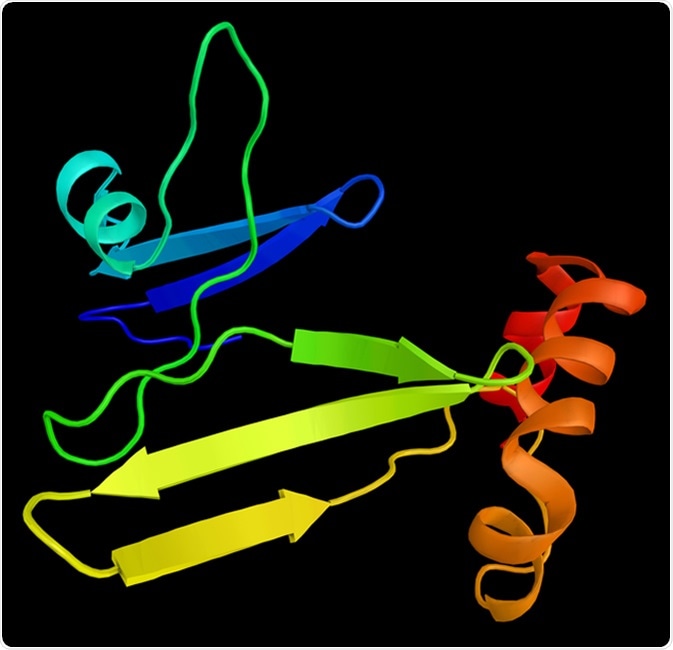Targeting vasopressin neurons alleviates postpartum depression – News-Medical

Report on a Novel Brain Circuit for Postpartum Depression and its Implications for Sustainable Development Goals
Executive Summary
A collaborative research initiative has identified a specific neural circuit responsible for modulating depressive-like behaviors in a mouse model of postpartum depression (PPD). The findings, which pinpoint a hormone-sensitive pathway from the medial preoptic area (MPOA) to the paraventricular nucleus (PVN), offer a precise target for future therapeutic interventions. This breakthrough directly supports the achievement of several United Nations Sustainable Development Goals (SDGs), most notably SDG 3 (Good Health and Well-being), SDG 5 (Gender Equality), and SDG 17 (Partnerships for the Goals).
Research Findings and Mechanisms
Identification of a Key Modulatory Circuit
Researchers have established a direct link between the sudden decline in estrogen following childbirth and the onset of mood disturbances. The study demonstrates that a specific brain circuit plays a critical role in this process.
- Pathway Identified: The circuit involves GABA-releasing (GABAergic) neurons in the medial preoptic area (MPOA) that project to and inhibit vasopressin-producing neurons in the paraventricular nucleus (PVN).
- Hormonal Sensitivity: This pathway is highly sensitive to fluctuations in estrogen, providing a biological basis for hormone-related mood changes during the postpartum period.
Experimental Validation in a PPD Model
Using a mouse model that simulates postpartum hormonal changes through ovarian hormone withdrawal (HW), the research team conducted a series of experiments to validate the circuit’s function.
- Circuit Activation: Chemogenetic activation of the MPOA-to-PVN GABAergic pathway significantly alleviated depressive-like behaviors in the mice.
- Circuit Inhibition: Conversely, inhibiting this same pathway induced depressive-like behaviors, even in mice with stable estrogen levels.
- Target Cell Identification: The study confirmed that vasopressin-producing neurons within the PVN are the critical downstream drivers of these depressive symptoms. Silencing these cells improved mood, while activating them worsened it.
- Mechanism Confirmation: Electrophysiological recordings verified that the MPOA GABAergic neurons form a direct, monosynaptic inhibitory connection—a “brake”—on the PVN vasopressin cells.
Alignment with Sustainable Development Goals (SDGs)
SDG 3: Good Health and Well-being
This research makes a substantial contribution to SDG Target 3.4, which aims to reduce mortality from non-communicable diseases and promote mental health and well-being. By elucidating a core mechanism of PPD, the study paves the way for more effective health interventions.
- Promoting Mental Health: It addresses PPD, a condition affecting approximately one in eight new mothers globally, directly contributing to maternal mental health.
- Advancing Targeted Treatments: The identification of a specific circuit and neurochemical driver enables a shift from broad, trial-and-error treatments to precise, mechanism-based therapies.
- Enhancing Quality of Care: Developing effective treatments for PPD improves the quality of essential healthcare services for women, aligning with the principles of universal health coverage (Target 3.8).
SDG 5: Gender Equality
The study advances gender equality by focusing on a significant health issue that disproportionately affects women, thereby promoting gender-responsive healthcare and research.
- Addressing Women’s Health: It prioritizes research into maternal mental health, a historically underfunded and overlooked area.
- Informing Policy: The findings provide a strong evidence base for policymakers to strengthen policies and increase funding for women’s mental health, contributing to the empowerment of women (Target 5.c).
- Improving Health Outcomes: By seeking to improve the well-being of new mothers, the research supports women’s health and their ability to thrive post-childbirth.
SDG 17: Partnerships for the Goals
The project exemplifies the collaborative spirit of SDG 17, which calls for global partnerships to achieve sustainable development. The research was a joint effort involving multiple international institutions.
- International Scientific Cooperation: The study was conducted through a partnership between institutions in China (Nanjing University’s School of Life Sciences, Nanjing Drum Tower Hospital, Peng Cheng Laboratory) and the United States (Icahn School of Medicine at Mount Sinai).
- Knowledge Sharing: This collaboration facilitates the sharing of scientific knowledge and technological innovation across borders, directly supporting Target 17.6 on enhancing international cooperation in science and technology.
Conclusion and Future Outlook
The identification of the MPOA-PVN vasopressin circuit as a key regulator of postpartum depressive behaviors is a significant scientific advancement. It provides a promising and highly specific target for the development of novel therapeutics. By advancing our understanding of PPD, this research not only offers hope for millions of women but also demonstrates a clear pathway through which targeted scientific inquiry can support the global agenda for sustainable development, particularly in the realms of health, gender equality, and international partnership.
SDGs Addressed in the Article
SDG 3: Good Health and Well-being
- The article focuses on postpartum depression, a significant mental health issue affecting new mothers. The research discussed aims to identify a “promising target for future treatments,” directly contributing to the goal of ensuring healthy lives and promoting well-being.
- The text highlights that the findings could lead to “more precise, mechanism-based therapies” and influence “clinical guidelines for managing hormone-related mood disorders,” which aligns with improving healthcare outcomes.
SDG 5: Gender Equality
- The article addresses a health condition that specifically affects women (new mothers). By seeking to improve treatment for postpartum depression, the research contributes to addressing women’s specific health needs.
- The article explicitly mentions that the findings could “inform policymakers about the importance of funding women’s mental health research,” which supports the empowerment of women by advocating for dedicated resources for their health issues.
Specific SDG Targets Identified
SDG 3: Good Health and Well-being
- Target 3.4: By 2030, reduce by one third premature mortality from non-communicable diseases through prevention and treatment and promote mental health and well-being. The research directly addresses this target by seeking to develop effective treatments for postpartum depression, a mental health condition. The article’s goal of moving “away from trial-and-error approaches” to “directly target the root of hormone-related mood disturbances” is a clear effort to improve treatment and promote mental well-being for new mothers.
SDG 5: Gender Equality
- Target 5.c: Adopt and strengthen sound policies and enforceable legislation for the promotion of gender equality and the empowerment of all women and girls at all levels. The article supports this target by stating that the research can “inform policymakers about the importance of funding women’s mental health research.” This is a direct call to action for strengthening policies that support women’s health and well-being.
Indicators for Measuring Progress
For Target 3.4 (Promote mental health and well-being)
- Prevalence of Postpartum Depression: The article states that postpartum depression “affects roughly one in eight new mothers worldwide.” A reduction in this prevalence rate would be a direct indicator of progress.
- Development of New Therapies: The article’s primary focus is on identifying a “specific brain circuit” to spur the “development of targeted therapies.” The creation and adoption of these new, more effective treatments would serve as an indicator of improved mental healthcare.
For Target 5.c (Adopt and strengthen sound policies)
- Funding for Women’s Mental Health Research: The article implies this as a key indicator by suggesting its findings should “inform policymakers about the importance of funding women’s mental health research.” An increase in dedicated funding would be a measurable indicator of progress towards this target.
SDGs, Targets, and Indicators Analysis
| SDGs | Targets | Indicators |
|---|---|---|
| SDG 3: Good Health and Well-being | Target 3.4: Promote mental health and well-being. |
|
| SDG 5: Gender Equality | Target 5.c: Adopt and strengthen sound policies…for the promotion of gender equality. |
|
Source: news-medical.net

What is Your Reaction?
 Like
0
Like
0
 Dislike
0
Dislike
0
 Love
0
Love
0
 Funny
0
Funny
0
 Angry
0
Angry
0
 Sad
0
Sad
0
 Wow
0
Wow
0




































![Lancaster homeowner’s energy-efficient renovation sparks clash over historic preservation [Lancaster Watchdog] – LancasterOnline](https://bloximages.newyork1.vip.townnews.com/lancasteronline.com/content/tncms/assets/v3/editorial/9/ed/9ed03d32-c902-44d2-a461-78ad888eec38/69050b156baeb.image.png?resize=150,75#)









































